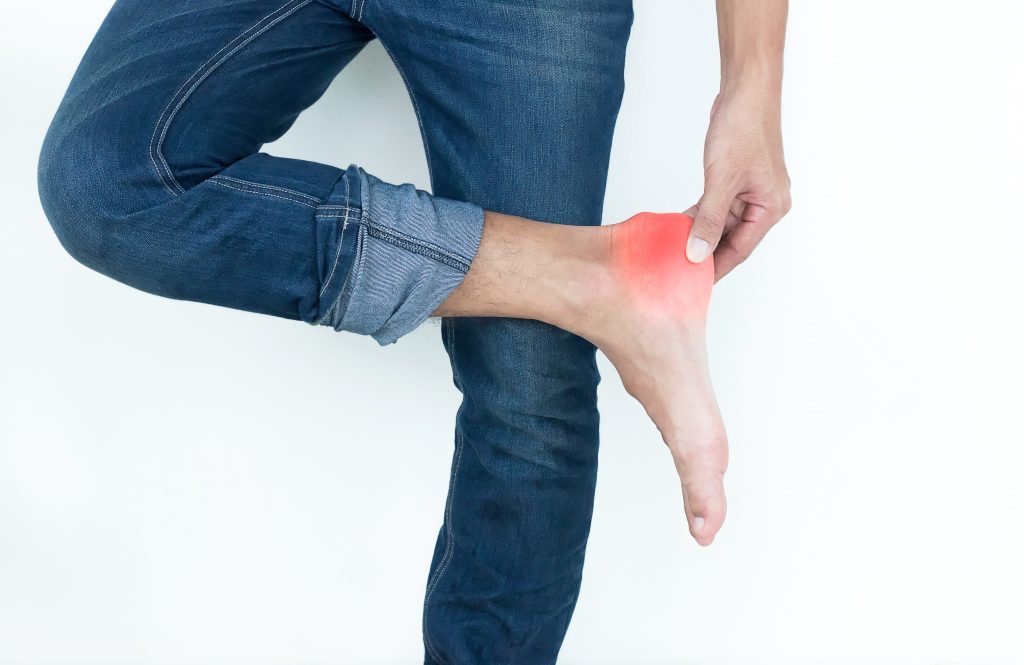Your Treatment Options For Tarsal Tunnel

WHAT IS TARSAL TUNNEL?
Tarsal Tunnel, or Tarsal Tunnel Syndrome (TTS), is typically caused by irritation of the tibial nerve at the ankle level. This is sometimes due to overuse of the foot and ankle. An increase in running, walking, standing, or exercising can irritate and compress the tibial nerve located in the heel – causing pain in the ankle. However, this condition happens to any people for no apparent reason usually. Common symptoms include searing, shooting pain in the ankle or foot, numbing, tingling, burning sensation, or losing feeling in the foot’s bottom. You may also lose some mobility in your toes if you’re suffering from this condition as well. Many describe tarsal tunnel syndrome pain only as ‘heel pain.’
Those with suspected Tarsal Tunnel Syndrome should see a physician as soon as possible because this condition can result in permanent nerve damage if left untreated. Your doctor will be able to diagnose you by performing a physical exam of the entire foot and lower leg area while asking you about your symptoms. There is no specific test for tarsal tunnel syndrome, but some physicians will also obtain an MRI or XRAY. One of the best tests to screen for this condition is a nerve conduction study as well.
Those with chronic overpronation of the foot, fallen arches or flat feet, osteoarthritis, and more are at increased risk for developing Tarsal Tunnel Syndrome. However, it also occurs in those with higher arches, larger foot muscles, and in people with ‘normal’ feet. There is no one reason an individual might suffer from TTS, so be mindful of the symptoms and seek a professional evaluation if you believe you have this.
AT-HOME OPTIONS FOR TREATMENT
Minor cases of Tarsal Tunnel Syndrome can improve quickly within just a few days of rest, ice, compression, and the affected foot’s elevation. Stretching the heel cord and feet along with hamstrings and hips is also very helpful. Taking over-the-counter anti-inflammatories can help relieve pain and inflammation as well. However, we prefer natural anti-inflammatories if that is available to you.
Here are a few basic at-home stretches and exercises to relieve some of the pain:
Heel-toe raises. Stand straight and slowly raise and flex the toes upward. Slowly lower the toes to the ground, gently raise your heels, and gradually put pressure on the foot’s ball.
Plantar fascia stretch. Sit down with your legs extended in front of you. Then reach out and grab your big toe or top of the foot, and gently pull backward. If you can’t reach your toes, you can use a towel or resistance band to perform this stretch.
You can also stretch the plantar fascia by rolling a tennis ball under your foot, along your arch toward your heel. Freezing a water bottle and rolling it can provide some relief from inflammation at the same time.
Heel cord stretch: stand next to a wall and place the foot up against the wall with the heel on the floor. Then lean the knee towards the wall to feel the calf muscles stretch. Hold the stretch for five breaths and release. Repeat!
If your symptoms do not improve within 48 hours, or you cannot complete any stretches without pain, you should see a clinician.
In-Clinic Options For Treatment
In most cases, physical therapy will be sufficient for treating TTS. Targeted stretching and strengthening of the connective tissues in the foot will support and open the joint that compresses the tibial nerve, giving it more room and relieving further inflammation. There are specific protocols designed to lengthen and stretch the associated nerves as well.
You may have to fully immobilize the foot or place it in a brace as your foot heels in severe cases. Occasionally, nerve-blocking and/or anti-inflammatory injections are useful, and even surgery may be required. There are a variety of complementary medicine treatments that can be useful as well. For instance, IV therapy with alpha-lipoic acid is known to reduce nerve based pain. Infrared therapy is also helpful.
At Warner Orthopedics & Wellness, our goal is to get you back on your feet as quickly as possible, with a few invasive procedures as possible. If you suspect that you may be suffering from Tarsal Tunnel Syndrome, click below to make an appointment today!





